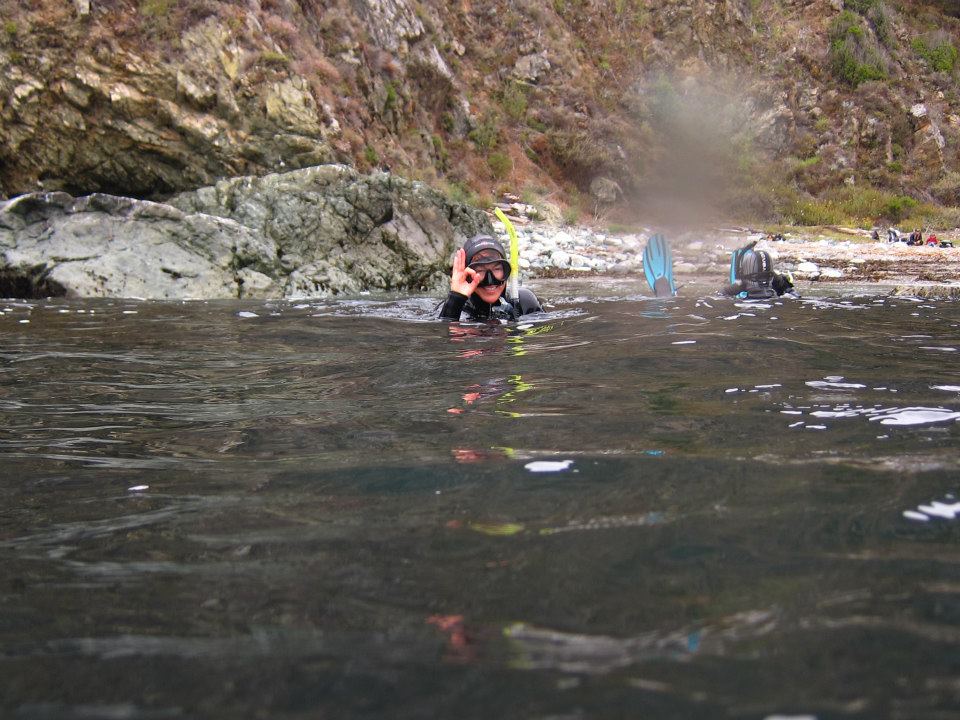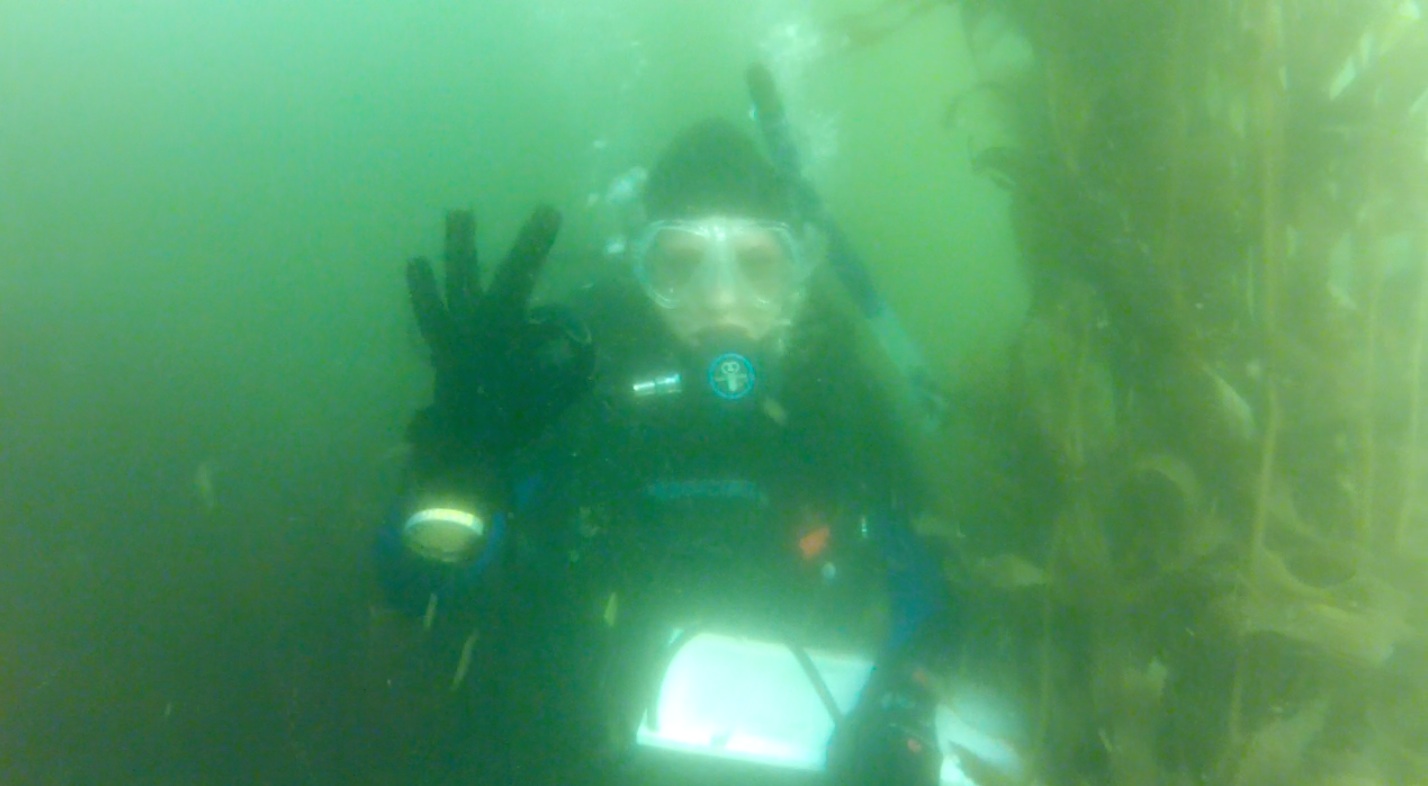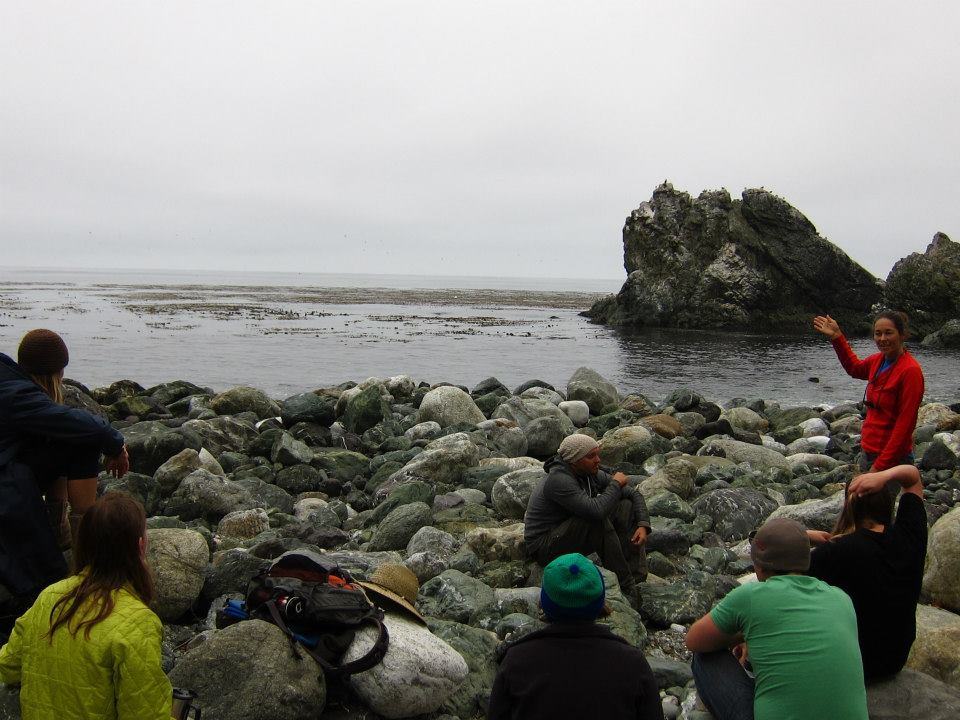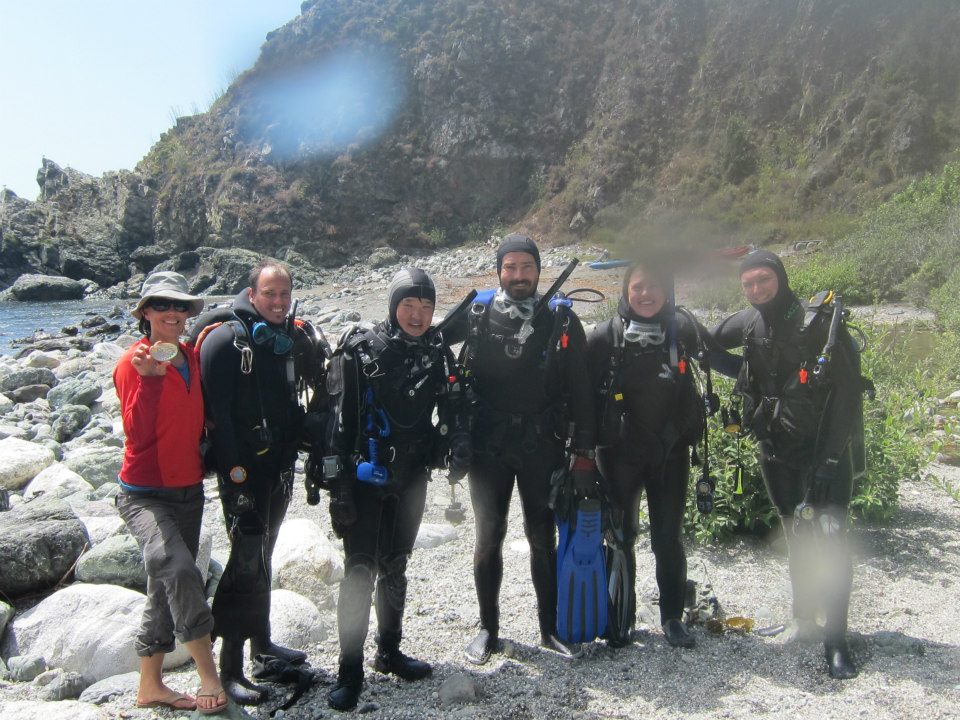By Catherine Drake, Invertebrate Zoology Lab
For many graduate students at MLML, diving is an essential component to their thesis work, whether it involves collecting samples, obtaining data, or making observations about subtidal ecosystems. Students must be research dive certified in order to perform these science-related activities. Here at the lab, we have an excellent research diving program run by our research faculty member and Diving Safety Officer (DSO) Diana Steller. Through this program, students have the option of taking the course either during the fall semester or during a two-week intensive course in the summer.

Having gotten my open water certification earlier this spring, I was excited to take the summer research diving class. For the first week, we practiced a series of underwater skills and swim tests to ensure that we felt comfortable in the water. There are certain basic scientific skills that must be practiced and perfected to become certified in research diving. These skills include laying out a transect tape and taking observations along the tape. To master this, we all studied the local fish, invertebrates, and seaweeds to take surveys within the kelp bed for an organization called Reef Check.

The following week, we caravanned south to Big Creek State Marine Reserve; while there, we camped in the redwoods and dove consecutively for four days. We would wake up each morning bright and early, eat breakfast to fuel us for the first dive of the day, and then head to the beach. Diana and Assistant DSO Scott Gabara would brief us on the dives, we’d suit up and enter the water ready to take data. After our first dive, we’d sit on the beach with our lunches and warm up in the sun before heading out for our second dive. Once we completed our second dive, we would wade into the large creek (hence the campsite's namesake), wash off our gear and relax.

The kelp canopy and sub-canopy are magnificent habitats at Big Creek. As I swam out to the location of each transect, I’d get entangled in giant kelp (Macrocystis pyrifera) and feather boa kelp (Egregia menziesii), and would use bull kelp (Nereocystis luetkeana) as an anchor when being pushed around by the swell. Once we descended, the seafloor was inundated with Pterogophora californica and Laminaria setchelii, so much so that I could not see the bedrock below. To obtain data for Reef Check, we placed the transect under the sub-canopy and crawled our way through the kelp to count stipes, look for inverts, and point our flashlights at unsuspecting rockfish.

I noticed that during any dive, something can and will go wrong, especially when you have transect tapes, slates, compasses, dive computers connected to you as you maneuver underwater. The most important lesson I learned from Diana on this trip was that it’s how you react to these situations that determines your competence and confidence as a research diver. If you stay calm and remember to always breathe while your mask fills with water, you get caught in kelp, your datasheet falls off your slate, and the surge inverts you, then you are definitely ready for research diving!



